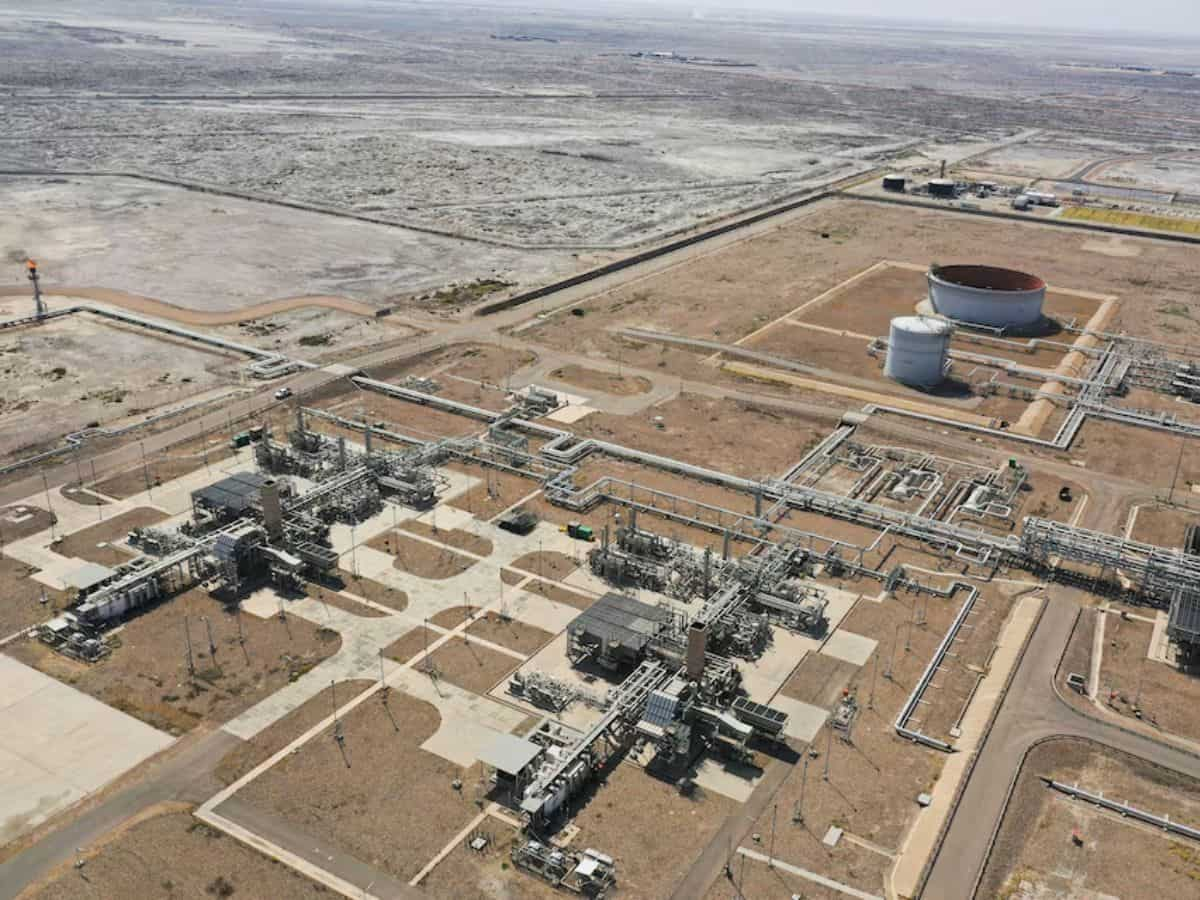Oil Prices Surge Amid Middle East Tensions
As geopolitics fuel market concerns, crude oil prices see a significant uptick with eyes on Israel-Gaza hostilities and Saudi pricing strategies.
Published May 08, 2024 - 00:05am

Image recovered from zeebiz.com
Brent crude oil price news: Oil prices ticked up early on Tuesday after Israel struck Rafah in Gaza while negotiations for a ceasefire with Hamas continued without resolution. Brent crude futures were up 46 cents, or 0.55 per cent, at $83.79 per barrel at 0010 GMT, while US West Texas Intermediate (WTI) crude futures rose 46 cents, or 0.59 per cent, to $78.94 a barrel.
Prices had edged upward on Monday, partially reversing the declines of last week in which both contracts posted their steepest weekly loss in three months, with the focus on weak US jobs data and the possible timing of a Federal Reserve interest rate cut.
Palestinian militant group Hamas on Monday agreed to a Gaza ceasefire proposal from mediators, but Israel said the terms did not meet its demands and pressed ahead with strikes in Rafah while planning to continue negotiations on a deal.
Israeli forces struck Rafah on Gaza's southern edge from the air and ground and ordered residents to leave parts of the city, which has been a refuge for more than a million displaced Palestinians.
A lack of settlement between the parties in the now seven-month long conflict has supported prices, as investors worry that regional escalation of the war will disrupt Middle Eastern crude supplies.
Riyadh's move to raise the official selling prices for its crude sold to Asia, Northwest Europe and the Mediterranean in June also supported prices, signalling expectations of strong demand this summer.
The world's top exporter hiked its flagship Arab Light crude oil price to Asia to $2.90 a barrel above the Oman/Dubai average in June, the highest since January and at the upper end of traders' expectations in a Reuters survey.
As market dynamics are evidently swayed by geopolitical events, the Brent and WTI futures show correlations with ongoing strikes by Israel in the southern Gaza city of Rafah, causing prices to escalate amid fears of supply disruption.
The sustained tension between Israel and Hamas and Saudi Arabia's decision to increase its official selling price for crude oil destined for Asia, Northwest Europe, and the Mediterranean are indicators of a potentially volatile energy market as the summer approaches.
The geopolitics of the Middle East, including the Israel-Hamas conflict and Saudi oil pricing policies, are critical variables shaping the trajectories of global oil prices, as demonstrated by recent fluctuations.
The broader market context is also influential in the oil pricing narrative. As investors digest the impact of the global economic recovery on oil demand post-pandemic, the market's susceptibility to geopolitical events becomes intensely pronounced. This recovery, while contributing to an uptick in demand, remains uneven across different economies, introducing additional variability to oil prices. Analysts have also highlighted that the COVID-19 pandemic's lingering effects continue to cast uncertainty on the market, potentially affecting travel and, by extension, fuel consumption.
Meanwhile, the U.S Federal Reserve's stance on monetary policy adjustments, following weaker-than-expected labor market data, is closely watched by market participants. Decisions regarding interest rates and economic stimuli have significant bearing on the value of the dollar, which in turn influences commodity prices due to the dollar-denominated nature of oil trading. A weaker dollar typically supports higher oil prices as it makes crude cheaper for holders of other currencies, thereby potentially increasing demand.
Furthermore, oil supply dynamics are also in focus. The Organization of the Petroleum Exporting Countries (OPEC) and its allies, a group known as OPEC+, have been gradually increasing supply month-on-month, post the deep cuts made in 2020 due to the pandemic-driven demand crash. While these incremental increases are meant to meet recovering demand without overwhelming it, they add yet another element of uncertainty to the price equation, especially if demand expansion does not proceed as forecasted.
The United States, as a major oil producer and consumer, plays a key role as well. Domestic production levels, fluctuating inventories, and the potential for infrastructure and regulatory changes under the current administration all serve to influence WTI in particular. Recent U.S. energy policy developments, alongside OPEC+'s supply management, are critical components in shaping near-term oil market outlooks.
From an investment standpoint, funds and asset managers are rebalancing their portfolios in response to these shifting market conditions. The actions of large institutional investors can sometimes have a magnifying effect on price movements, adding to the momentum in either direction. This rebalancing acts as a barometer of investor sentiment towards the oil market, sometimes pre-empting broader changes in market trends.
In conclusion, the complex interplay of geopolitical tensions, global economic threads, monetary policies, oil supply mechanics, and market sentiment are all coalescing to inform the current state of the oil markets. As summer demand looms, and the Middle East remains a fulcrum of geopolitical uncertainty, the world's most pivotal commodity will likely continue to exhibit volatility, with investors and market analysts meticulously scrutinizing each development for its potential price impact.







